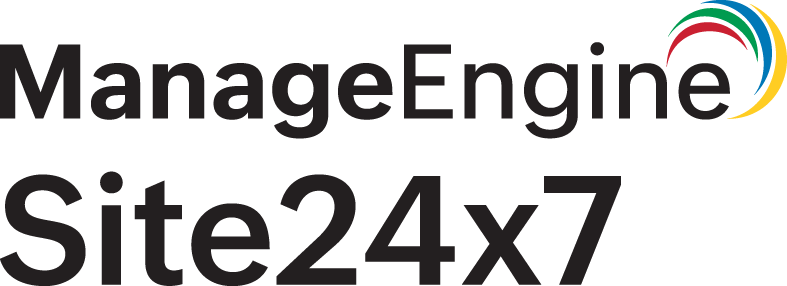Configuration Rules for Kubernetes
Configuration Rules enable you to associate predefined actions for different monitor groups to track configuration changes and maintain optimal settings. These rules allow for specific criteria to be established, which determines the actions that will be applied to the monitors.
Set up Configuration Rules
Supported OS platforms: Linux
- Log in to Site24x7 and go to Admin > Inventory > Configuration Rules. Click Add Rule.
- Provide a Display Name and Description for the rule.
- Define Criteria: Mention the criteria as AND or OR. Based on the criteria defined (AND or OR), either one criterion (OR) or all of them (AND) will be taken into consideration for executing an action.
- Select Kubernetes as the Monitor Type.
- Define Actions: Use the drop-down menu and associate the following actions for Kubernetes:
- Check Frequency: Select the poll interval as one minute or five minutes for data collection to happen.
- User Profile: Manually add the name of the user profile that you wish to monitor. Press Enter to add multiple values.
- Tags: Associate tags for the particular monitor to organize and manage monitors creatively.
- Dependent on Monitor: Set up a dependent monitor, which would then suppress alerts sent to monitors if the selected monitor's status is Down.
- On-Call Schedule: Ensure that the notifications are sent to assignees in specific shift hours to help them quickly respond to alerts or incidents.
- Mute Resource Termination Alerts: Set this to True if you don't want to receive alerts when the containers are suspended/deleted from Site24x7.
- Automatically Remove Terminated Resources: Set this to True if you want to remove terminated resources of Kubernetes from Site24x7.
- Add Resource Types: Manually add the resource type that you wish to monitor. Press Enter to add multiple values.
Filter your Kubernetes resources for adding them using the following filters: - Filter Resources on Namespaces
- Filter Resources on Name
- Filter Resources on Labels
- Filter Nodes for Addition Based on Name
- Filter Pods for Addition Based on Name
- Filter Containers for Addition Based on Name
- Filter Services for Addition Based on Name
- Filter DaemonSets for Addition Based on Name
- Filter Deployments for Addition Based on Name
- Filter HPAs for Addition Based on Name
- Filter ReplicaSets for Addition Based on Name
- Filter Endpoints for Addition Based on Name
- Filter Replication Controllers for Addition Based on Name
- Filter StatefulSets for Addition Based on Name
- Filter Persistent Volume Claims for Addition Based on Name
- Filter ConfigMaps for Addition Based on Name
- Filter Persistent Volumes for Addition Based on Name
- Filter Ingresses for Addition Based on Name
NoteFurthermore, you can use RegEx to filter any type of resource and add them for monitoring. A sample is shown below:
mysql-.*|redis-.*|memcached-.*
This will match all the MySQL, Redis, and Memcached pods that align with the above pattern and add them for monitoring.
- Associate the following action for Kubernetes Nodes and ensure the Monitor Type is Kubernetes Node:
- Disable node alerts: Set this to True if you don't want to receive alerts for the node from Site24x7.
- Associate the following action for Kubernetes Pods and ensure the Monitor Type is Kubernetes Pod:
- Disable pod alerts: Set this to True if you don't want to receive alerts for the pod from Site24x7.
- Select the type of automation you would like to execute from the IT Automation Templates and provide the necessary parameters to remediate routine actions automatically.
- Click Save or Save and Run Rule to run the rule immediately.
Related articles
-
On this page
- Set up Configuration Rules
- Related articles
